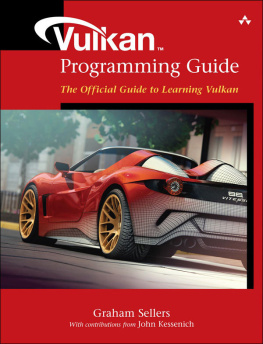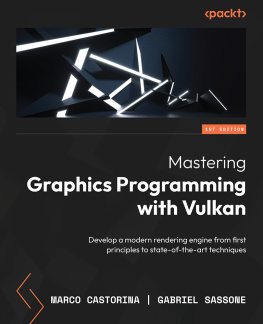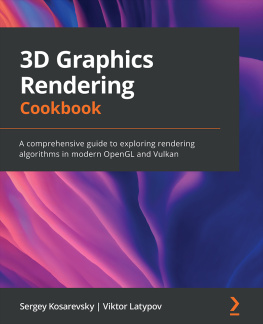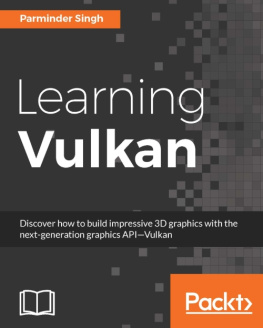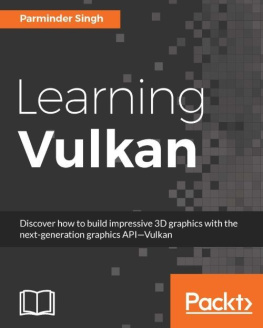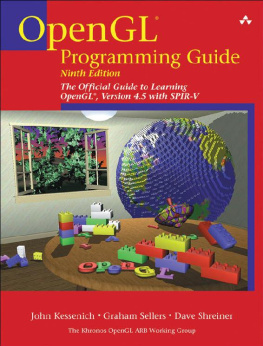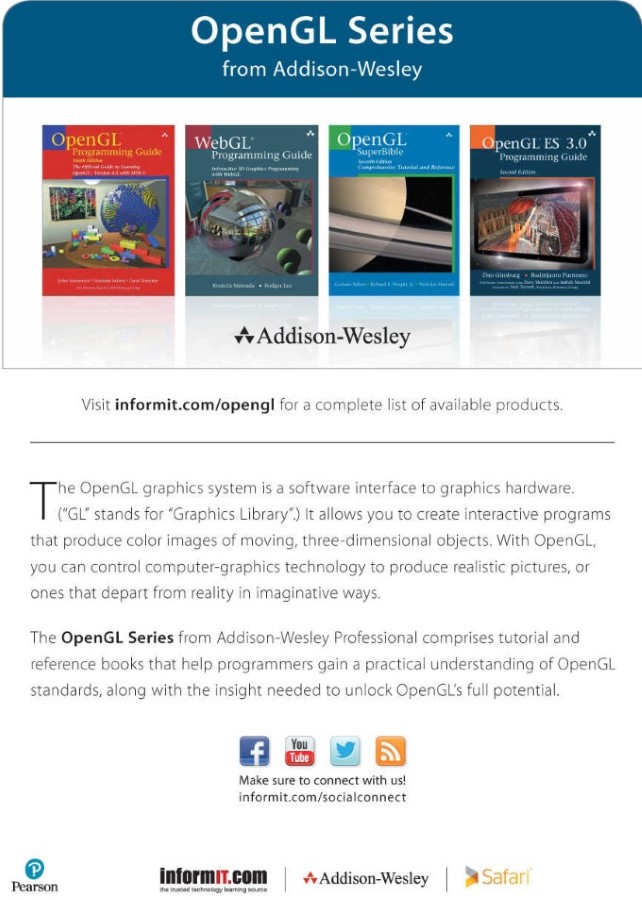Graham Sellers - Vulkan Programming Guide: The Official Guide to Learning Vulkan
Here you can read online Graham Sellers - Vulkan Programming Guide: The Official Guide to Learning Vulkan full text of the book (entire story) in english for free. Download pdf and epub, get meaning, cover and reviews about this ebook. year: 2016, publisher: Addison-Wesley Professional, genre: Computer. Description of the work, (preface) as well as reviews are available. Best literature library LitArk.com created for fans of good reading and offers a wide selection of genres:
Romance novel
Science fiction
Adventure
Detective
Science
History
Home and family
Prose
Art
Politics
Computer
Non-fiction
Religion
Business
Children
Humor
Choose a favorite category and find really read worthwhile books. Enjoy immersion in the world of imagination, feel the emotions of the characters or learn something new for yourself, make an fascinating discovery.
- Book:Vulkan Programming Guide: The Official Guide to Learning Vulkan
- Author:
- Publisher:Addison-Wesley Professional
- Genre:
- Year:2016
- Rating:4 / 5
- Favourites:Add to favourites
- Your mark:
Vulkan Programming Guide: The Official Guide to Learning Vulkan: summary, description and annotation
We offer to read an annotation, description, summary or preface (depends on what the author of the book "Vulkan Programming Guide: The Official Guide to Learning Vulkan" wrote himself). If you haven't found the necessary information about the book — write in the comments, we will try to find it.
The Definitive Vulkan Developers Guide and Reference: Master the Next-Generation Specification for Cross-Platform Graphics
The next generation of the OpenGL specification, Vulkan, has been redesigned from the ground up, giving applications direct control over GPU acceleration for unprecedented performance and predictability. Vulkan Programming Guide is the essential, authoritative reference to this new standard for experienced graphics programmers in all Vulkan environments.
Vulkan API lead Graham Sellers (with contributions from language lead John Kessenich) presents example-rich introductions to the portable Vulkan API and the new SPIR-V shading language. The author introduces Vulkan, its goals, and the key concepts framing its API, and presents a complex rendering system that demonstrates both Vulkans uniqueness and its exceptional power.
Youll find authoritative coverage of topics ranging from drawing to memory, and threading to compute shaders. The author especially shows how to handle tasks such as synchronization, scheduling, and memory management that are now the developers responsibility.
Vulkan Programming Guide introduces powerful 3D development techniques for fields ranging from video games to medical imaging, and state-of-the-art approaches to solving challenging scientific compute problems. Whether youre upgrading from OpenGL or moving to open-standard graphics APIs for the first time, this guide will help you get the results and performance youre looking for.
Coverage includes
- Extensively tested code examples to demonstrate Vulkans capabilities and show how it differs from OpenGL
- Expert guidance on getting started and working with Vulkans new memory system
- Thorough discussion of queues, commands, moving data, and presentation
- Full explanations of the SPIR-V binary shading language and compute/graphics pipelines
- Detailed discussions of drawing commands, geometry and fragment processing, synchronization primitives, and reading Vulkan data into applications
- A complete case study application: deferred rendering using complex multi-pass architecture and multiple processing queues
- Appendixes presenting Vulkan functions and SPIR-V opcodes, as well as a complete Vulkan glossary
Graham Sellers: author's other books
Who wrote Vulkan Programming Guide: The Official Guide to Learning Vulkan? Find out the surname, the name of the author of the book and a list of all author's works by series.

